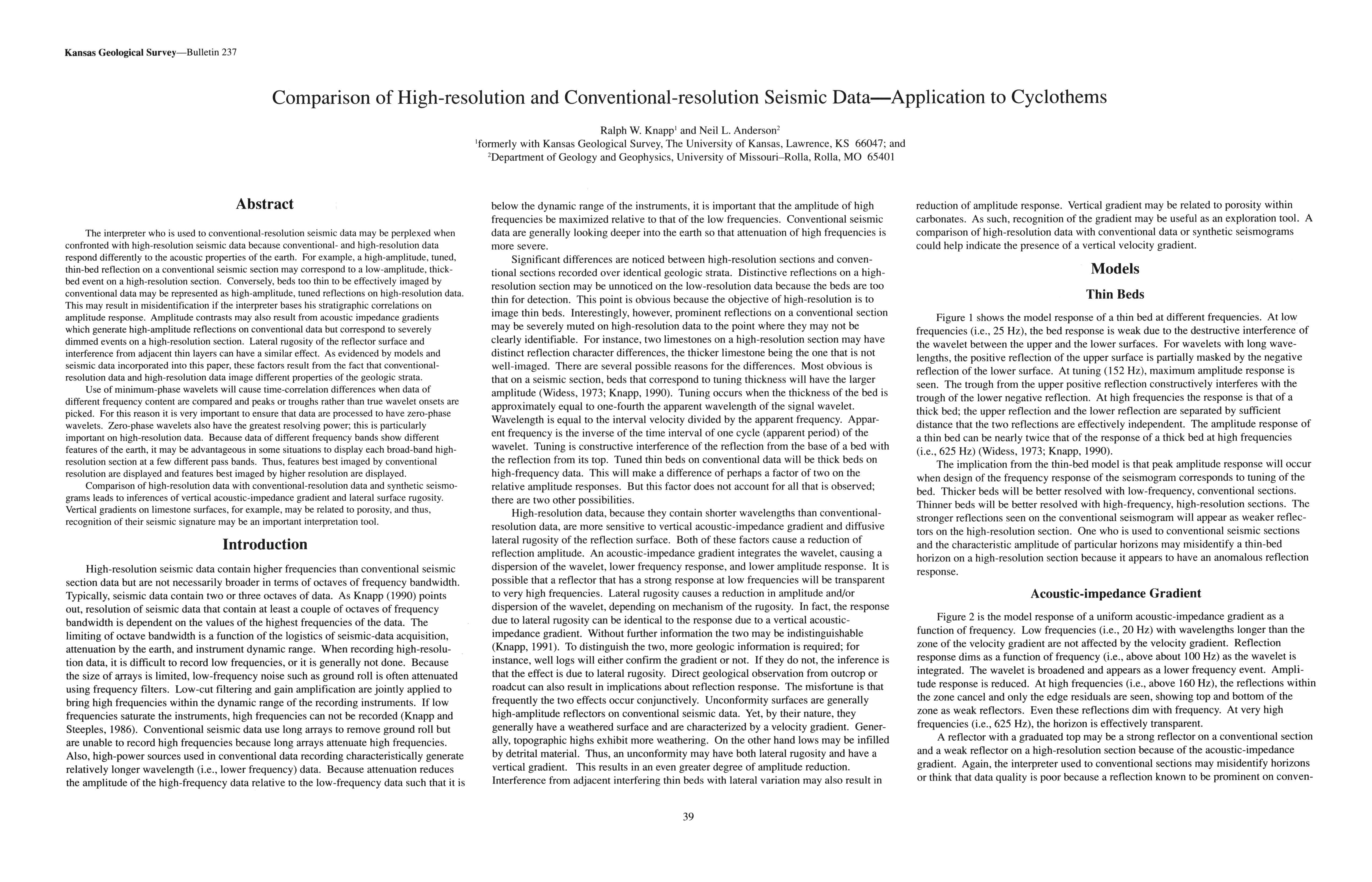Comparison of High-resolution and Conventional-resolution Seismic Data--Application to Cyclothems
DOI:
https://doi.org/10.17161/kgsbulletin.no.237.20420Abstract
The interpreter who is used to conventional-resolution seismic data may be perplexed when confronted with high-resolution seismic data because conventional- and high-resolution data respond differently to the acoustic properties of the earth. For example, a high-amplitude, tuned, thin-bed reflection on a conventional seismic section may correspond to a low-amplitude, thick-bed event on a high-resolution section. Conversely, beds too thin to be effectively imaged by conventional data may be represented as high-amplitude, tuned reflections on high-resolution data. This may result in misidentification if the interpreter bases his stratigraphic correlations on amplitude response. Amplitude contrasts may also result from acoustic impedance gradients which generate high-amplitude reflections on conventional data but correspond to severely dimmed events on a high-resolution section. Lateral rugosity of the reflector surface and interference from adjacent thin layers can have a similar effect. As evidenced by models and seismic data incorporated into this paper, these factors result from the fact that conventional-resolution data and high-resolution data image different properties of the geologic strata.
Use of minimum-phase wavelets will cause time-correlation differences when data of different frequency content are compared and peaks or troughs rather than true wavelet onsets are picked. For this reason it is very important to ensure that data are processed to have zero-phase wavelets. Zero-phase wavelets also have the greatest resolving power; this is particularly important on high-resolution data. Because data of different frequency bands show different features of the earth, it may be advantageous in some situations to display each broad-band high-resolution section at a few different pass bands. Thus, features best imaged by conventional resolution are displayed and features best imaged by higher resolution are displayed.
Comparison of high-resolution data with conventional-resolution data and synthetic seismograms leads to inferences of vertical acoustic-impedance gradient and lateral surface rugosity. Vertical gradients on limestone surfaces, for example, may be related to porosity, and thus, recognition of their seismic signature may be an important interpretation tool.
Downloads

